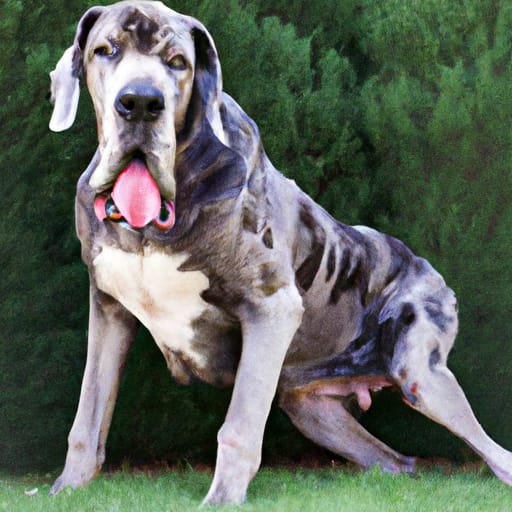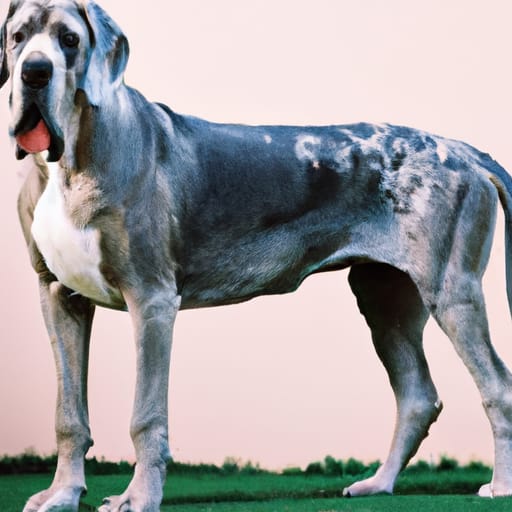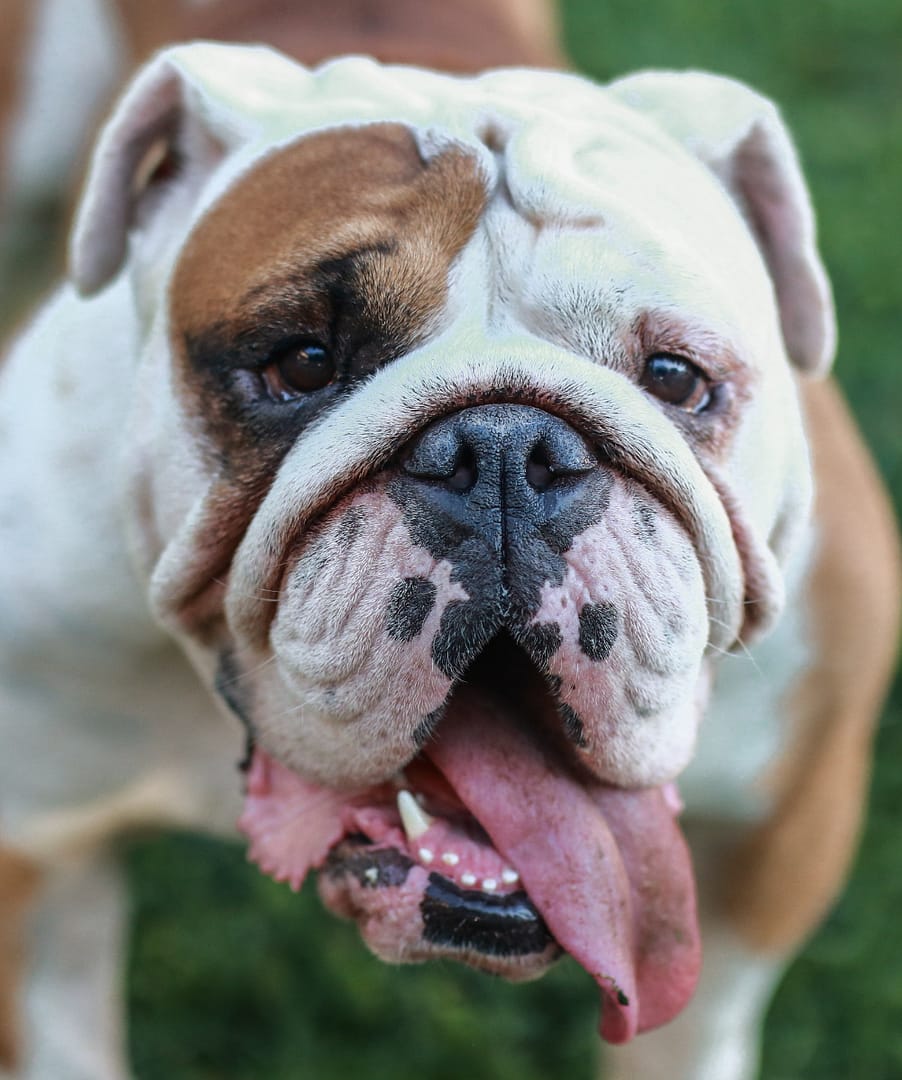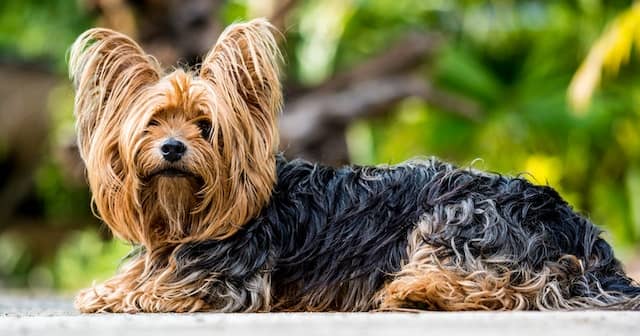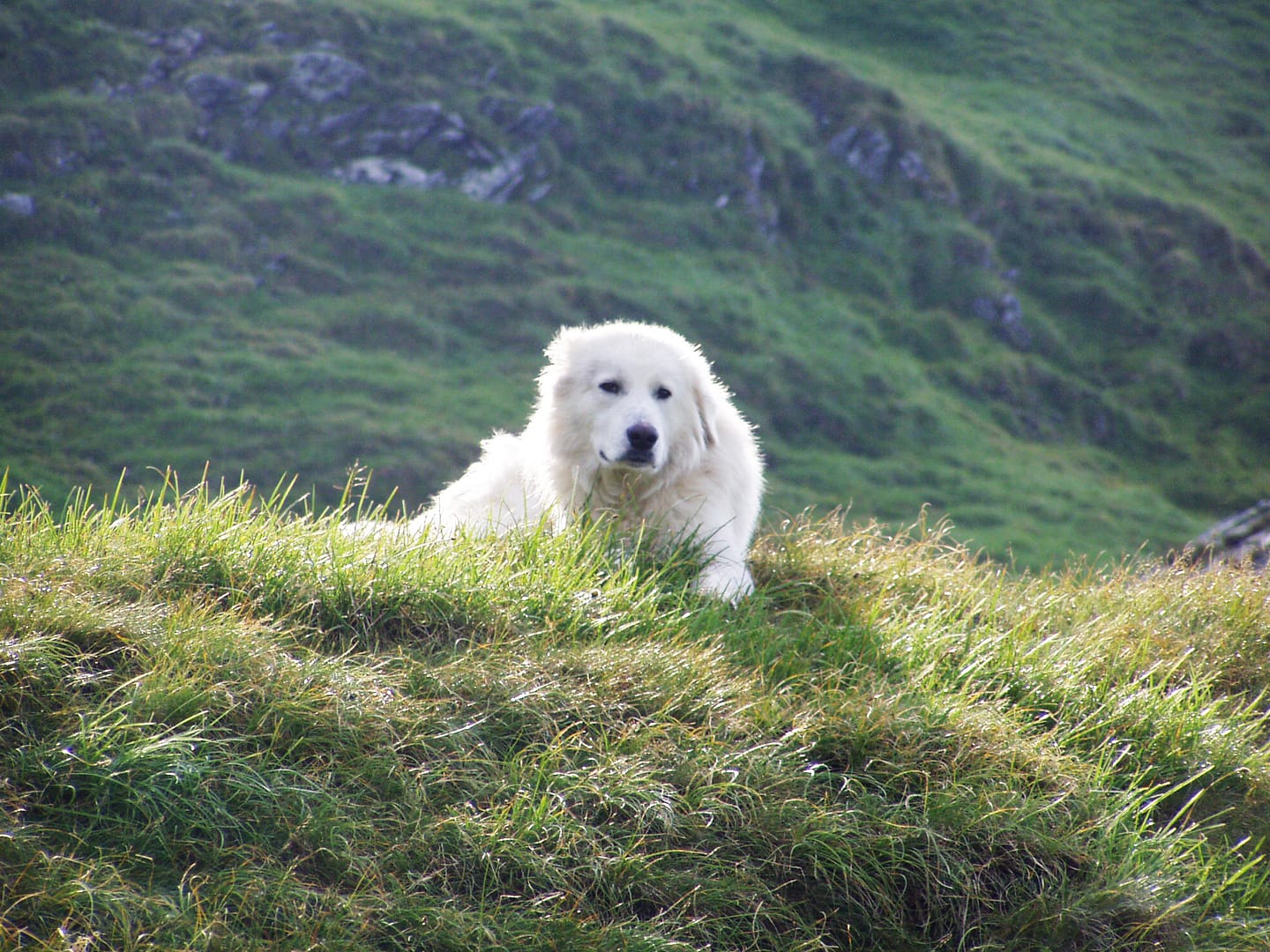Great Dane Shedding: Why Do Great Danes Shed?
Do Great Danes Shed? If you’ve ever been around a Great Dane, you may have noticed that they have a tendency to shed quite a bit. But why do these lovable giants shed so much? In this article, we’ll explore the reasons behind Great Dane shedding and provide some insights on how to manage it. Whether you’re a proud owner of a Great Dane or simply curious about their shedding habits, this article will give you the answers you’re looking for. So, let’s dig in and uncover the mystery behind Great Dane shedding!
Overview of Great Dane Shedding
What is shedding?
Shedding is a natural process in which dogs lose their old or damaged fur to make way for new growth. It is a common occurrence in most dog breeds, including the majestic Great Dane. Shedding helps dogs regulate their body temperature and keeps their coat healthy.
Understanding Great Dane shedding
Great Danes have a short, smooth coat that lies close to their body. Despite their short hair, they are moderate to heavy shedders. This shedding may come as a surprise to some owners who expect that a short-haired breed would naturally shed less. However, it’s important to understand that shedding is influenced by various factors, including genetics, environment, nutrition, and overall health.
Frequency of shedding
Great Danes typically shed throughout the year, although the amount of shedding may vary depending on the season and individual factors. They may experience a heavier shed during the spring and fall, commonly referred to as “blowing coat,” when they naturally shed their winter or summer coat to adapt to changing temperatures.
Factors influencing shedding in Great Danes
Shedding in Great Danes can be influenced by both genetic and environmental factors. Genetics play a significant role in determining a dog’s shedding pattern, and certain lines within the breed may shed more or less than others. Environmental factors, such as climate, living conditions, and allergens, can also impact the amount of shedding a Great Dane experiences. Additionally, diet and nutrition can affect the health of a dog’s coat, which may influence shedding as well.
Understanding the Great Dane Breed
Background and history of Great Danes
Great Danes, also known as German Mastiffs, have a rich history dating back to ancient civilizations. They were initially bred for hunting wild boars and guarding estates. Over time, their role evolved to become loyal family companions and majestic show dogs. Great Danes are known for their gentle and friendly nature, making them a popular choice among dog enthusiasts.
Physical characteristics of Great Danes
Great Danes are among the largest dog breeds, known for their towering height and muscular build. They typically have a strong, well-proportioned body, a deep chest, and a long, elegant neck. Their head is rectangular with a distinctive muzzle, and they have expressive eyes and floppy ears. Great Danes come in different coat colors, including brindle, fawn, black, blue, and harlequin.
Coat type and properties
The Great Dane’s coat is short, smooth, and glossy. It lies flat against their body and is relatively easy to maintain. Great Danes have a single-layered coat, lacking a dense undercoat typically found in many double-coated breeds. This single-layered coat contributes to their moderate to heavy shedding throughout the year.
Genetic factors affecting shedding in Great Danes
Genetics play a significant role in determining a Great Dane’s shedding pattern. Within the breed, some lines may have a higher propensity to shed, while others may shed less. Responsible breeders carefully select parent dogs based on their shedding patterns to produce litters with desired coat characteristics. Genetic testing can help identify dogs with a lower shedding potential, which can be valuable information for those looking to bring home a Great Dane with minimal shedding tendencies.
The Role of Genetics in Great Dane Shedding
Inherited shedding patterns in Great Danes
Shedding patterns in Great Danes can be inherited from their parents. If both parents of a Great Dane puppy are heavy shedders, it is likely that the offspring will also shed heavily. Conversely, if both parents have a low shedding propensity, the puppies are more likely to inherit this trait. However, it’s important to remember that genetics is just one factor influencing shedding, and environmental factors can also play a significant role.
Breeding practices and shedding
Responsible breeders take into account shedding tendencies when selecting parent dogs for breeding. They aim to produce litters with desired coat characteristics and temperaments. By carefully considering the shedding patterns of potential parents, breeders can work towards reducing shedding in future generations.
Identifying high or low shedding lines
If you are considering adding a Great Dane to your family and are concerned about shedding, it’s helpful to research the lineage of the puppy you are interested in. Reputable breeders will have detailed information about the shedding tendencies of the parents and can provide guidance on whether the particular line is known for heavy or light shedding.
Genetic testing for shedding in Great Danes
Genetic testing has become a valuable tool in the world of dog breeding. It allows breeders to identify specific genes related to shedding, which can help them make informed decisions when choosing parent dogs. While genetic testing for shedding in Great Danes is not widely available, advancements in DNA testing technology may make it more accessible in the future.
Environmental Factors and Shedding
Seasonal shedding in Great Danes
Great Danes, like many other dog breeds, experience seasonal shedding. During the spring and fall, they may shed their coat more heavily, which helps them adapt to the changing temperatures. This shedding phase, often referred to as “blowing coat,” is a natural process and should not cause undue concern.
Climate and shedding
The climate in which a Great Dane lives can influence the amount of shedding they experience. In colder climates, they may develop a thicker coat during the winter, which leads to more shedding when transitioning to warmer weather. Conversely, Great Danes living in warmer climates may shed more consistently throughout the year but often have a lighter coat overall.
Indoor living conditions and shedding
The environment in which a Great Dane resides can also impact their shedding. Dry indoor conditions, such as those created by central heating or air conditioning, may exacerbate shedding. Maintaining proper humidity levels and providing adequate hydration can help minimize excessive shedding due to dry indoor air.
Allergens and shedding in Great Danes
Allergens, such as pollen, dust mites, and certain ingredients in their food, can cause allergic reactions in Great Danes, leading to increased shedding. If you suspect that your Great Dane may have allergies, it is important to consult with a veterinarian who can help identify the specific allergens and recommend appropriate management strategies.
Diet and Nutrition
Impact of diet on Great Dane shedding
A well-balanced diet plays a crucial role in maintaining a healthy coat and minimizing shedding. Great Danes require a nutritious diet that provides them with essential vitamins, minerals, and fatty acids. Feeding a diet formulated for their specific needs can help promote a healthy coat and minimize excessive shedding.
Essential nutrients for coat health
Certain nutrients are particularly beneficial for maintaining a healthy coat in Great Danes. Omega-3 fatty acids, commonly found in fish oil, can help reduce inflammation and improve the overall condition of the skin and coat. Additionally, a diet rich in protein, vitamins A and E, and biotin can contribute to a lustrous, well-nourished coat.
Food allergies and shedding
Food allergies can manifest through various symptoms, including excessive shedding. If you suspect that your Great Dane may have a food allergy, consult with a veterinarian to identify potential allergens and develop an appropriate elimination diet. Once the allergens are identified, removing them from your dog’s diet can help alleviate shedding associated with food sensitivities.
Choosing the right diet to minimize shedding
When selecting a diet for your Great Dane, consider their specific nutritional needs, any known allergies or sensitivities, and consult with a veterinarian to determine the most appropriate option. High-quality commercial dog foods or specially formulated diets for large breeds can provide the necessary nutrients to maintain a healthy coat and minimize shedding.
Grooming and its Influence on Shedding
Importance of grooming in managing shedding
Regular grooming is essential in managing shedding and maintaining a healthy coat in Great Danes. Brushing not only helps remove loose fur but also stimulates the skin and distributes natural oils throughout the coat, promoting its health and shine. Grooming sessions also provide an opportunity to bond with your Great Dane and monitor their overall well-being.
Brushing techniques for Great Dane shedding
When it comes to brushing a Great Dane, it’s important to choose the right tools to effectively remove loose fur without causing any discomfort. A rubber curry brush or a soft bristle brush is often suitable for their short, smooth coat. Brush in the direction of hair growth, focusing on areas such as the back, belly, and tail where shedding may be more noticeable.
Bathing and shedding
While Great Danes are generally clean dogs, occasional baths can help remove loose hair and keep their coat in good condition. Use a gentle dog shampoo specifically formulated for their sensitive skin and coat. It’s important not to over-bathe, as excessive bathing can strip the coat of its natural oils and lead to dryness, which may aggravate shedding.
Professional grooming services for Great Danes
If you’re unsure about grooming your Great Dane yourself or simply prefer professional assistance, consider seeking the services of a reputable dog groomer. Professional groomers have the skills and tools to handle Great Dane shedding and can provide additional grooming services like nail trimming and ear cleaning, ensuring your dog looks and feels its best.

Health Conditions and Shedding
Skin conditions and increased shedding
Some health conditions can cause increased shedding in Great Danes. Skin conditions such as dermatitis, fungal or bacterial infections, or parasites can lead to excessive shedding. If you notice any signs of skin irritation, redness, or persistent itching, it is essential to consult with a veterinarian for proper diagnosis and treatment.
Parasites and shedding in Great Danes
External parasites, like fleas and ticks, can irritate a Great Dane’s skin and cause excessive shedding. Regular preventive measures, such as using flea and tick treatments recommended by your veterinarian, can help prevent infestations and reduce shedding associated with these pesky parasites.
Hormonal imbalances and shedding
Hormonal imbalances, such as an underactive thyroid or certain endocrine disorders, can disrupt the normal hair growth cycle in Great Danes, leading to abnormal shedding patterns. If you suspect a hormonal imbalance may be causing excessive shedding in your dog, consult with a veterinarian who can perform the necessary tests and recommend appropriate treatments.
Medical treatments for excessive shedding
If your Great Dane is experiencing excessive shedding that is not attributed to normal shedding patterns, addressing any underlying medical conditions is crucial. Your veterinarian can determine the cause of the excessive shedding and recommend appropriate medical treatments or interventions to alleviate the issue.
Minimizing Great Dane Shedding
Implementing a regular grooming routine
To minimize shedding in Great Danes, developing a regular grooming routine is essential. Set aside regular brushing sessions to remove loose fur and prevent it from spreading around the house. Additionally, scheduling routine baths according to your dog’s needs and using appropriate grooming tools can help keep shedding under control.
Choosing appropriate grooming tools
Selecting the right grooming tools for your Great Dane can make a significant difference in managing shedding. Look for brushes specifically designed for short-haired breeds, such as rubber curry brushes or soft bristle brushes. These tools can effectively remove loose fur without causing discomfort or damaging the coat.
Maintaining a healthy diet and nutrition plan
A healthy diet and proper nutrition play a vital role in minimizing shedding in Great Danes. Ensure your dog’s diet is well-balanced, rich in essential nutrients, and tailored to their specific needs. Consult with a veterinarian to determine the best diet plan for your Great Dane and monitor their coat health and shedding patterns.
Monitoring for signs of health issues
Regularly monitor your Great Dane’s coat condition, shedding patterns, and overall health. Keep an eye out for any changes in their coat’s texture or appearance, excessive shedding beyond normal levels, skin irritations, or persistent itching. Promptly address any concerns by consulting with a veterinarian to rule out any underlying health issues.

When to Seek Veterinary Advice
Common signs of excessive shedding
While shedding is a normal part of a Great Dane’s life, excessive shedding may indicate an underlying problem. Signs of excessive shedding may include large bald patches, thinning of the coat, persistent itching or scratching, or the appearance of skin lesions. If you notice these signs, it’s important to seek veterinary advice for proper diagnosis and treatment.
Determining if shedding is normal or abnormal
Determining whether shedding is normal or abnormal can be challenging for dog owners. In general, if your Great Dane’s shedding is within the expected seasonal patterns, has been consistent over time, and there are no associated signs of health issues, it is likely within the normal range. However, if you have concerns about your dog’s shedding, it is always best to consult with a veterinarian for a professional assessment.
When to consult a veterinarian about shedding
If you are unsure whether your Great Dane’s shedding is within normal limits or suspect an underlying health issue, it is advisable to consult with a veterinarian. They can conduct a thorough examination, review your dog’s medical history, and determine if any further diagnostic tests are necessary to identify the cause of excessive shedding.
Diagnostic tests for shedding-related health concerns
If your Great Dane’s shedding is excessive or abnormal, a veterinarian may recommend certain diagnostic tests to identify potential underlying health concerns. These tests may include skin scrapings, blood tests, hormone level evaluations, or allergy testing. The results of these tests can help guide the veterinarian in developing an appropriate treatment plan to address your Great Dane’s shedding issues.
Conclusion
Great Dane shedding is a natural process influenced by various factors, including genetics, environment, nutrition, and overall health. While they are moderate to heavy shedders throughout the year, understanding the underlying causes and implementing appropriate strategies can help minimize shedding and maintain a healthy coat. Regular grooming, a balanced diet, and vigilant monitoring for any signs of health issues are essential in ensuring your Great Dane’s shedding remains within normal limits. By addressing shedding-related concerns and seeking veterinary advice when needed, you can provide the best care for your beloved Great Dane and help them live a happy and healthy life.
